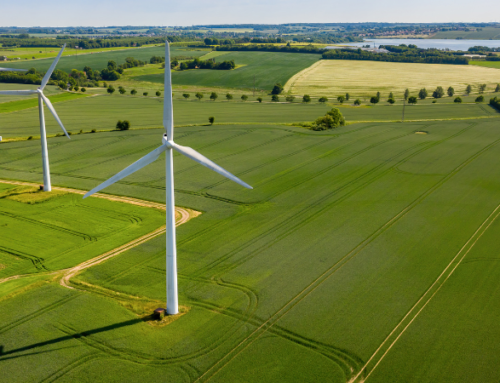In the never-ending quest to promote energy efficiency and sustainability, an array of utility rebates and energy efficiency incentives have become a critical strategy for businesses looking to reduce their own energy costs. These financial incentives not only make it economically viable for companies to invest in certain projects, but also reward those who proactively curtail energy demand. From tax credits and grants to direct payments and rebates on energy-efficient equipment, incentives are ever-changing and abundant. This article delves into the world of rebates and energy efficiency incentives, guiding businesses through the opportunities available to them.
What Are Energy Efficiency Rebates & Incentives?
In summary, energy efficiency rebates and incentives exist to promote the adoption of energy efficiency and renewable energy technologies. These incentive programs and typically utility-based incentives that offer money or tax credits for businesses that install energy-efficient motors, replace old technology with more efficient systems, or curtail energy load. For example, Pennsylvania-base utility companies adhere to Act 129 that charges every Pennsylvania customer a small amount on each electricity bill. The money collected by Act 129 provides funding for LED lighting projects, high-efficiency HVAC systems, and other energy efficiency projects.
Some of these programs are state-based incentives, such as solar renewable energy credits, or SRECS. An SREC represents 1,000 kiloWatt hours (kWh) generated from a solar system. If a commercial customer, for example, installs a commercial solar system that generates 100,000 annual kWh, they will be rewarded with 100 SRECS each year. And, the SRECS have value that can be traded in for cash. Incentives such as SRECS and Act 129 are two examples of our energy policy and regulation is shaping the energy efficiency industry today. Let’s explore some more recent laws affecting these types of programs.
Energy Efficiency & The Inflation Reduction Act
The Inflation Reduction Act (IRA), recently passed by the Biden administration, has many energy-based programs aimed at promoting sustainability. While the primary focus of the $369 billion bill was aimed at reducing inflation and healthcare costs, it also promotes the advancement of clean energy. One notable feature of the IRA is a section that introduces a tax credit for the purchase of eligible electric vehicles (EVs) up to January 1, 2033. This incentive offers buyers the chance to claim up to $7,500 in tax credits, provided they meet specific criteria.
Other Types Of Energy Incentives For Business Owners & Homeowners
There are an array of energy efficiency rebates and incentive programs available for business owners who are focused on reducing their carbon footprint, transitioning to net zero, or simply becoming more sustainable. Let’s explore some of these incentives in more detail.
Investment Tax Credits
The federal investment tax credit applies to businesses that are interested in installing a commercial solar system. This program, designed to incentivize the growth of solar energy, allows businesses to claim 30% of their total solar system cost in the form of a tax credit. Unlike a tax deduction, tax credits can be applied on a one-to-one basis. So if a business obtains a $100,000 tax credit for solar and has a $100,000 tax liability, they will not owe any tax.
Green Energy Accelerated Depreciation
Typical depreciation schedules allow businesses to deduct 2-4% of a capital investment over the course of several decades. With accelerated depreciation related to green energy projects, the IRS allows businesses to accelerate the depreciation schedule by taking a deduction for 80-100% of the total project cost in the first year. This represents a significant financial incentive for businesses that invest in energy efficient technologies.
Energy-Efficient Property Installed in Commercial Buildings
Buildings that achieve a 50% reduction in heating and cooling energy consumption after installing a new HVAC system are eligible for a tax benefit of up to $1.80 per square foot. Additionally, for upgrades made to the building’s envelope, lighting, or heating and cooling systems, a partial tax benefit of up to $0.60 per square foot is available.
Accelerated Depreciation for Smart Meters
Presently, the expense of smart electric meters and smart grid technology is typically amortized by taxpayers over a duration of 20 years. However, recent legislation permits the depreciation of such assets over a reduced period of 10 years, provided that these assets do not already fall under a more accelerated depreciation schedule.
Homeowner Tax Credits
Until 2032, homeowners are eligible for federal income tax credits, offering up to $3,200 each year to reduce the expenses of energy-efficient home improvements by as much as 30%. Furthermore, the Residential Clean Energy credit, which has been expanded and extended, offers homeowners a 30% income tax credit for installing clean energy systems, including rooftop solar panels, wind turbines, geothermal heat pumps, and battery storage units, valid through 2032. This credit will decrease to 22% in 2033 and 2034.
Need Help Exploring Energy Rebates For Your Business?
While there are many federal tax credit programs available to businesses nationwide, there are many local, utility-based incentives that need to be researched to determine if your business qualifies. Our team of energy efficiency experts works with our customers to determine all of the energy rebates and incentives that might be available to them so that they can pay for energy efficiency upgrades or reduce their payback periods. Contact us to learn more about what you can do today.



